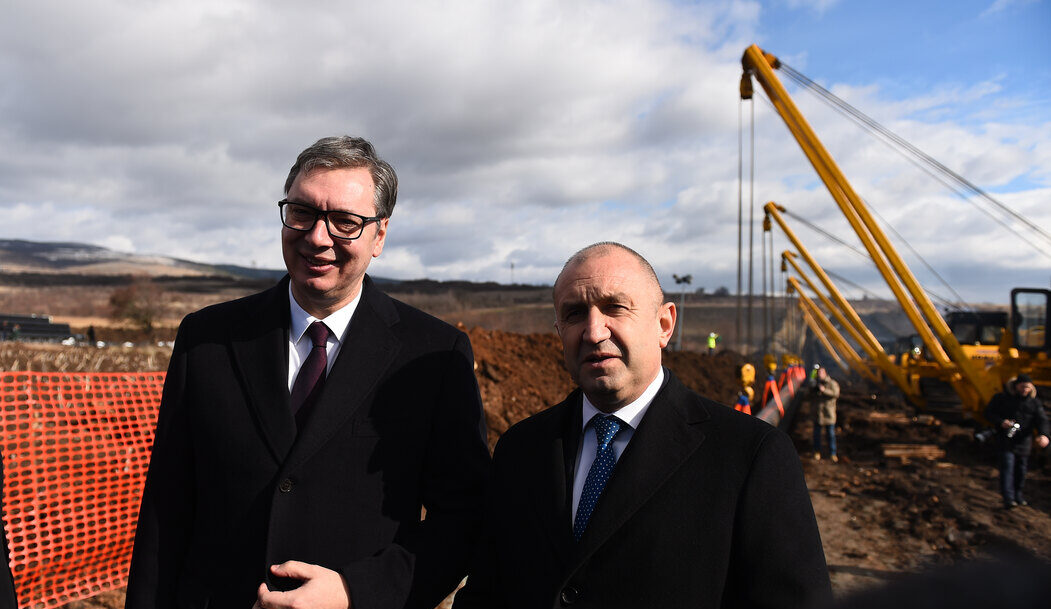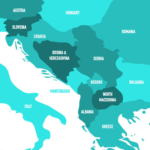Serbia and Bulgaria have completed the construction of a gas pipeline aimed at reducing dependence on Russian gas by diversifying supplies. The 170-kilometer long pipe runs from the Serbian city of Niš to the outskirts of Sofia, the capital of Bulgaria. Its annual capacity is 1.8 billion cubic meters, which could cover up to 60% of Serbia’s demand. The new line will allow Serbia to gain access to alternative gas supplies from Greece and Azerbaijan, as well as provide Bulgaria with access to gas from Western Europe and the Adriatic Sea.
Work on the project began back in February. Last year, Serbia announced its intentions to reduce the volume of Russian gas imports. In November, Serbia signed documents on the purchase of gas from Azerbaijan. According to the agreement signed between Serbian and Azerbaijani gas companies, the pipeline will allow Serbia to import up to 400 million cubic meters of natural gas from Azerbaijan. Serbia’s annual demand is about 3 billion cubic meters. The European Commission provided EUR 49.6 million for the project, while EUR 25 came from the European Investment Bank as a loan, and Serbia laid down EUR 22.5 million. Belgrade allocated EUR 15 million directly for the project and another EUR 7.5 million for preparatory work and design.
Serbian President Aleksandar Vučić met with his Bulgarian counterpart Rumen Radev before the ceremony for commissioning the Serbia-Bulgaria gas interconnector. President Ilham Aliyev of Azerbaijan and EU Ambassador to Serbia Emmanuel Giaufret also participated in the event launching the EUR 94 million gas interconnector in Trupal near Niš.
The head of the European Union delegation to Serbia, Emanuele Giaufret, said in Niš, at the gas interconnector opening ceremony, that Serbia is diversifying its energy sources and becoming more sustainable, which is an indicator of its strategic orientation and commitment to European integration.
“This project is crucial for the security and stability of our region and the development of our economies,” Bulgarian President Radev said, adding that “it’s all about diversification. This will bring more alternatives in the supply to both countries, Serbia and Bulgaria.”
“This is extremely important for us and will provide greater security in important locations in Serbia, like Dimitrovgrad, Bela Palanca, and Pirota, but it will also bring a better future. Now we can buy gas on the open market from six or seven different LNG terminals, including Alexandroupolis,” said Serbian President Aleksandar Vučić. He added that in the future, Serbia will safer from the point of view of energy security.
The president of Serbia held a bilateral meeting with his counterpart from Azerbaijan, after which air defense systems, unmanned and manned air and ground combat platforms were presented at an military airfield in Niš, and the 63rd Parachute Airborne Brigade and other special units performed a drill. The event were also attended by Serbian Minister of Defense Miloš Vučević, Chief of the General Staff Milan Mojsilović, as well as Minister of Finance Sinisa Mali and Minister of Foreign Affairs Ivica Dačić.
Thus, having built the interconnector, Serbia and Bulgaria significantly improved their energy independence from Russia. Alternative Azerbaijani gas creates a balance for the domestic energy consumption of the two countries, as well as strengthens stability of gas supply to enterprises and private households. Given that Serbia is also connected by a pipe to Hungary, Budapest can also be involved in receiving Azerbaijani gas, and the Hungarian government announced its readiness to do so a few months ago. Therefore, it is not surprising that more than half of the funds for the projects were provided by the European Commission.
Meanwhile, the meeting of the presidents of Serbia and Azerbaijan was devoted to more than just energy issues. The Serbian side decided to show its capabilities for military exports to Azerbaijan. They showcased the PASARS-Mistral four-barreled anti-drone system with newly developed surface-to-air missiles, radar and jamming system; and PASARS-16, Zero series. Then RLN-RF and RLN-TK surface-to-air missiles, new ALAS air-to-surface missiles. and GAVRAN loitering munitions were demonstrated. The Serbian armed forces also showed PEGAZ and SENKA UAVs with an RVML-02 ground control station, VRABAC, Killer OSICA drone, OBAD drone, and mini-QUADRIKOPTER. The ground unmanned platforms Mali Miloš V2, Mali Miloš V1, Mali Miloš logistic, Mali Miloš ultra light, and the ground unmanned platform MF Niš were also presented at the military airfield. After that, the Serbian army presented the mortar fire control system. The 63rd Parachute Brigade performed vertical and horizontal manoeuvres involving H-145, Mi-35M, Mi-17, and Mi-8 helicopters, MTV modular all-terrain vehicle, Miloš 4×4 and Humvees armoured vehicles. After that, the 72nd Special Forces Brigade showed off its capabilities using a M-17 helicopter and the Mali Miloš N/V1 unscrewed platform.
It can be stated with confidence that Serbia and Azerbaijan have decided to cooperate closely not only in the field of energy, but also in military security, which points to a fundamentally new level of relations between Baku and Belgrade.



